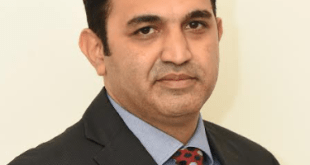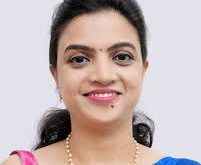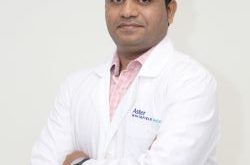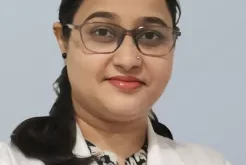 Stroke is a medical emergency that primarily results in death and disability in India. It is caused by a disturbance of blood flow to the brain. Millions of Indians suffer from stroke each year, underscoring the significance of raising public knowledge of the illness’s warning indications and the critical need of receiving prompt medical assistance.
Stroke is a medical emergency that primarily results in death and disability in India. It is caused by a disturbance of blood flow to the brain. Millions of Indians suffer from stroke each year, underscoring the significance of raising public knowledge of the illness’s warning indications and the critical need of receiving prompt medical assistance.
The Importance of Prompt Action
Stroke requires immediate medical attention, unlike many other illnesses. Within minutes, brain cells devoid of oxygenated blood start to perish. The likelihood of reducing brain injury and optimising recovery increases with the initiation of treatment. Research indicates that when clot-busting medication is given to patients within 4.5 hours of a stroke, patient outcomes are dramatically improved. Remember, in the case of stroke, time lost is brain lost.
Recognizing the Warning Signs: The FAST Approach
Fortunately, you can detect a possible stroke with the aid of a straightforward technique called FAST. Recall the abbreviation and the activities corresponding to each letter:
- F – Face Drooping: Does the face seem to droop or get numb on one side? Request a smile from the person. It may be an indication if one side appears uneven or droops.
- A – Weakness in One Arm: Is the Individual Able to Raise Both Arms Equally? A possible sign is numbness or weakness in one arm.
- S – Speech Difficulty: Does the speaker have slurred, jumbled, or hard-to-understand speech? Request that they repeat a short sentence. Having trouble speaking clearly may be a red flag.
- T – Time to Call Emergency Services: Dial (108) as soon as you notice any of these indicators. Don’t wait for your symptoms to get better or go away—every minute matters.
Beyond FAST: Additional Symptoms of Stroke
Even though FAST is a useful tool, it’s crucial to be aware of additional possible stroke symptoms, such as:
- Sudden Vision Issues: Does the patient report having double vision, abrupt blindness in one or both eyes, or hazy vision?
- Severe Headache: If a sharp headache occurs suddenly and is not associated with any other symptoms, it may indicate a stroke.
- Dizziness or Balance Problems: Does the individual experience unsteadiness, dizziness, or trouble staying balanced?
- Confusion or Difficulty Understanding: Does the individual appear disoriented, bewildered, or incapable of comprehending what you’re saying?
Risk Factors for Stroke in India
Knowing your risk factors will make you more alert to any possible stroke symptoms. In India, some typical risk factors are as follows:
- High Blood Pressure: One of the main risk factors for stroke is uncontrolled hypertension. Adherence to drug regimen and routine blood pressure monitoring are essential.
- Diabetes: Diabetes raises the risk of stroke and can harm blood arteries. It’s critical to control diabetes properly.
- High Cholesterol: An increased risk of stroke can result from plaque accumulation in the arteries caused by high cholesterol levels.
- Smoking: Smoking affects the lining of blood arteries and narrows them, increasing the risk of clots. It’s critical that you stop smoking.
- Obesity: A higher risk of stroke has been associated with obesity. It’s vital to keep a healthy weight.
- Physical Idleness: Living a sedentary lifestyle increases the risk of stroke. Try to be consistent with physical activity.
- Unhealthy Diet: A diet heavy in trans fats, salt, and saturated fats increases the risk of stroke. Prioritise eating a diet high in fruits, vegetables, and whole grains that is heart-healthy.
The positive news is that most strokes can be prevented. You can considerably lower your chance of having a stroke by controlling your risk factors and leading a healthy lifestyle.
The following are some proactive strategies you can apply:
- Keep a Healthy Weight: Reducing weight if you are obese or overweight will help lower your risk of stroke.
- Consume a Heart-Healthy Food: Give lean protein sources, whole grains, fruits, and veggies first priority. Cut down added sugar, salt, and saturated and trans fats.
- Exercise Frequently: On most days of the week, try to get in at least 30 minutes of moderate-intensity exercise.
- Control Stress: Prolonged stress has been linked to elevated blood pressure. Investigate stress-reduction methods such as yoga and meditation.
- Frequent Medical Examinations: Make an appointment for routine medical examinations with your physician to track blood pressure, cholesterol, and glucose levels.
- Give Up Smoking: One of the best strategies to lower the risk of stroke is to give up smoking. Consult your physician for advice or look into smoking cessation programmes.
Authored by Dr. Keni Ravish Rajiv, Senior Consultant – Neurology and Head of Epilepsy Services, Aster CMI Hospital, Bangalore
 Newspatrolling.com News cum Content Syndication Portal Online
Newspatrolling.com News cum Content Syndication Portal Online







